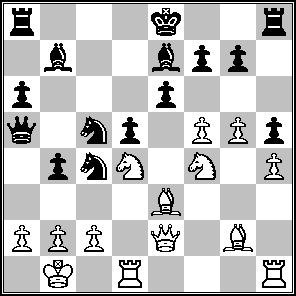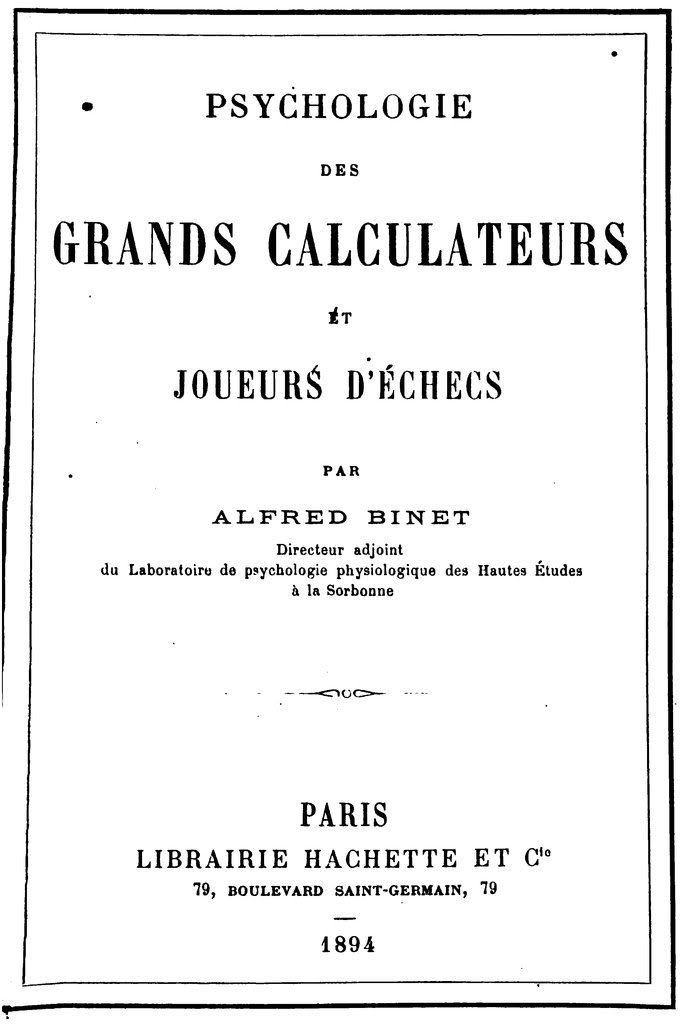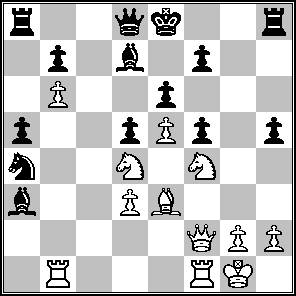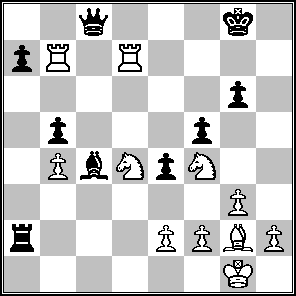
This position appears in Alexey Root's article "A Wise Man Once Said...," which is a review of The Wisest Things Ever Said About Chess (2008) by Andrew Soltis. Root states, "For four of the first 12 problems, the reader chooses a move for one side, then that side loses" (10). The reader of Soltis' book is looking for 1...Nxb2!
That move leads to a position posted here at Chess Skills less than forty-eight hours ago: it was the position that I chose to highlight from Anand – Ftáčnik, Bled 1993 in "Anand's Golden Games, Part I."
Root gives the line from The Wisest Things Ever Said About Chess: after 2.fxe6!, Black could try 2...Nxd1 3.exf7+ Kxf7 4.Rxd1 Ne4 5.Bxe4 dxe4 6.Qc4+. Viswanathan Anand's annotations in Chess Informant give the line Soltis offers among several other possibilities, but they end at 4.Rd1 with the symbols for a decisive advantage and attack (The Best of the Best 1000, 279). However, Anand calls brilliant what Soltis reduces to good: 21.fe6!! in Chess Informant becomes 2.fxe6! in The Wisest Things Ever Said About Chess.
Pattern Recognition

Even before Alfred Binet published his study on pattern recognition, Psychologie des Grands Calculateurs et Joueurś d’Échecs (1894), many chess players understood that even among the seemingly infinite possibilities in a game of chess, certain motifs recur with frequency.
Root's review presents the clue offered by Soltis: a statement by Nigel Short that orients the reader towards possibilities of checkmate instead of worrying about pawn structure. Indeed, White's monarch looks a bit vulnerable if he grabs the knight. On the other hand, after Anand's 21.fxe6 the White and Black pawns (e6 and f7) remained in contact through an extended tactical struggle until the game ended with 36.exf7 Rf8 37.g6.
One suspects that Anand understood the critical importance of the pawn structure in the distant future when he responded to Ftáčnik's 20...Nxb2! with 21.fxe6!!
There are two sets of patterns stemming from the position in the diagram. Soltis want his readers to find the dance of the black knights around the enemy king. Anand found the decisive pawn on the seventh rank.
I immediately recognized the position not only because I wrote about it two days ago, but also because White's knights and Black's uncastled king reminds me of a key position in another game with an entirely different character: Pillsbury – Lasker, Nuremburg 1896.
After 22.Nf4

In that game, Pillsbury's beautiful move emphasized by Emanuel Lasker in Lasker's Manual of Chess, 2nd edition (1932) was a sacrifice of the f-pawn to free the f4 square for a knight. Aside from the position of the white knights, there's nothing that connects Pillsbury's 1896 win over Lasker to Anand's golden game almost a century later.
Two knights appear on those squares in substantially more than seven thousand games in my database of historic games, and twice in my OTB games. This past summer, in an upset I scored against one of Spokane's top junior players, the knights are almost insignificant.

My two pigs were the decisive element in that game. Such rooks are one of the key patterns all chess players need to learn.
Binet's study of chess and memory facilitated Adriaan de Groot, Het denken van den schaker (1946), translated as Thought and Choice in Chess (1965), and the critically important study by William Chase and Herbert Simon in Cognitive Psychology, "Perception in Chess" (1973). Chase and Simon found that strong and weak players remember random chess positions equally well, but strong players do better at recalling positions with tactical or strategic significance.
Anand's game brought to memory Pillsbury's knights because they were salient to his victory, but did not remind me of my own more recent victory where their presence is less significant.














The more you blog the more intresting it becomes! Cant wait for the next installment.
ReplyDeleteBtw, i move my blog to http://chess-tiger.blogspot.com/
so please adjust your link(s)
Thanks for the compliment and update.
ReplyDeleteI've been planning to write a piece concerning pattern recognition, but very little of the content I had in mind came out in this post, so that one's still coming.
I started this morning with one diagram and one paragraph in mind, but I couldn't stop. I'm delighted that it holds some interest for someone else.